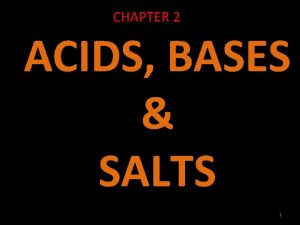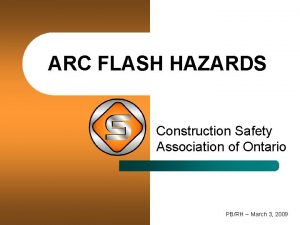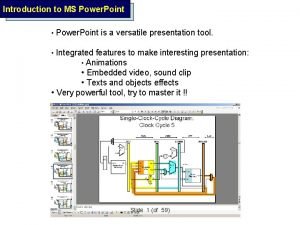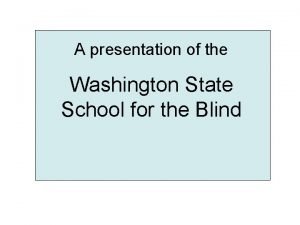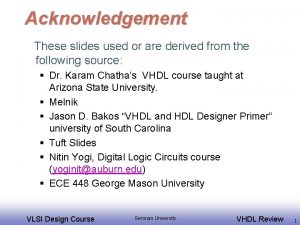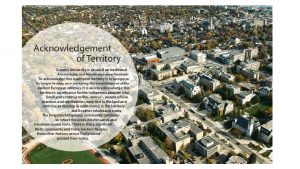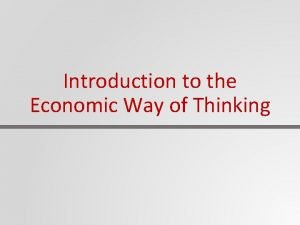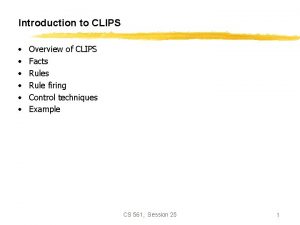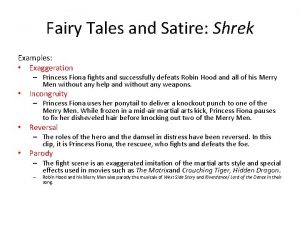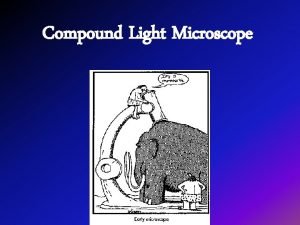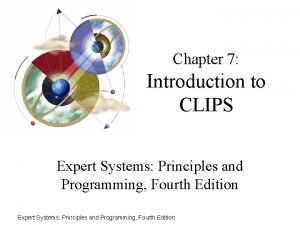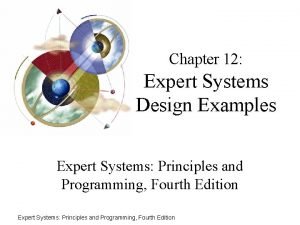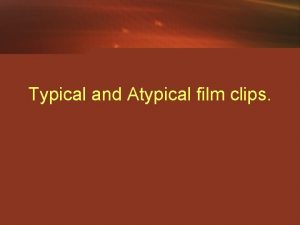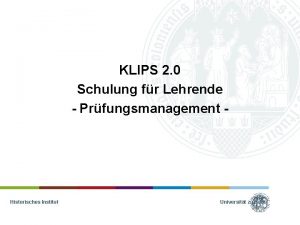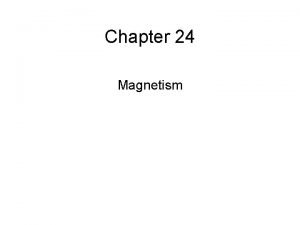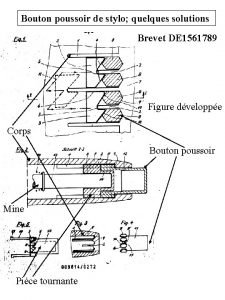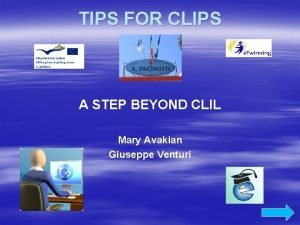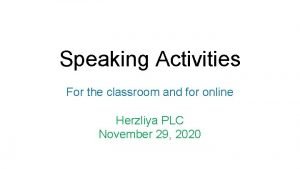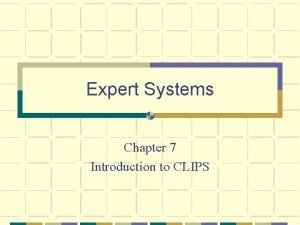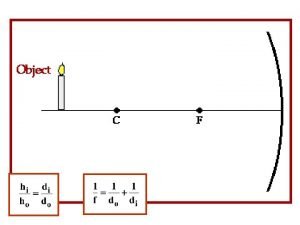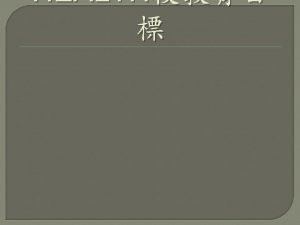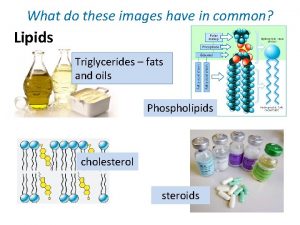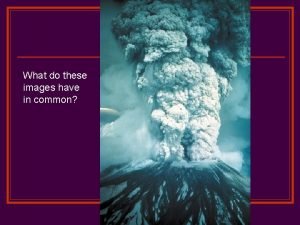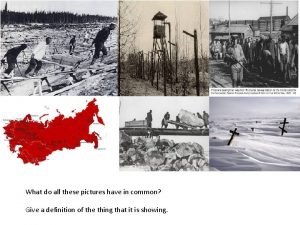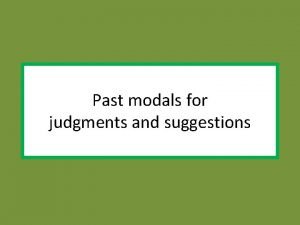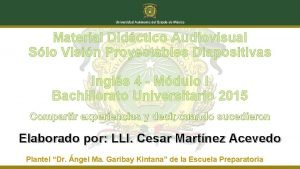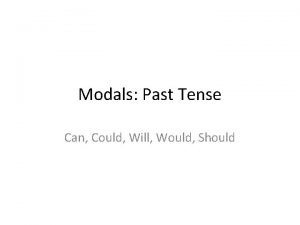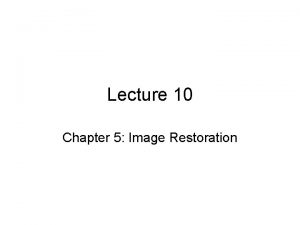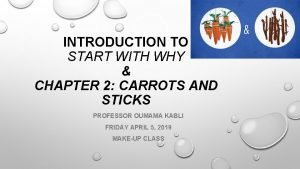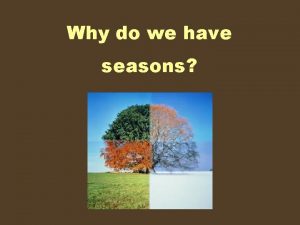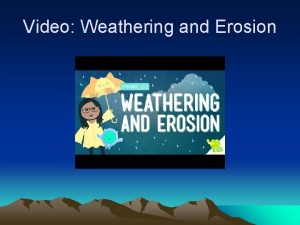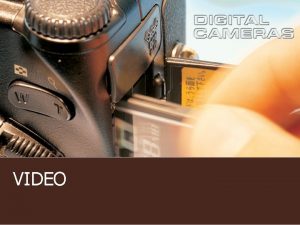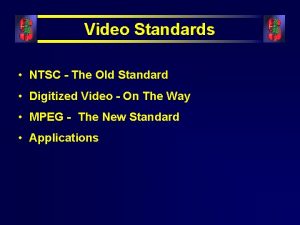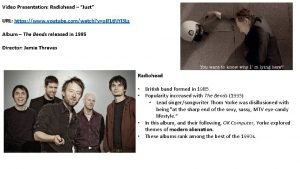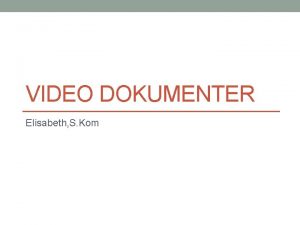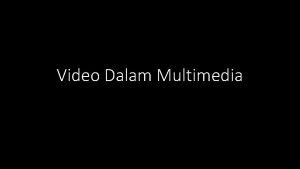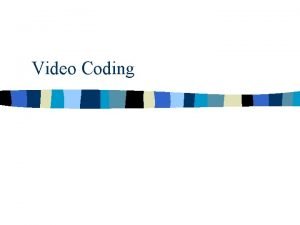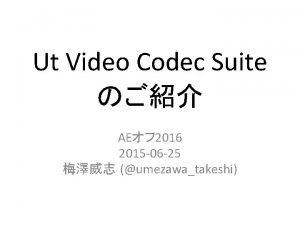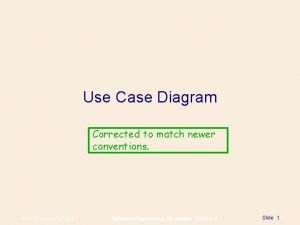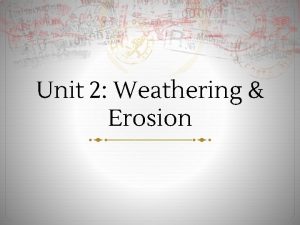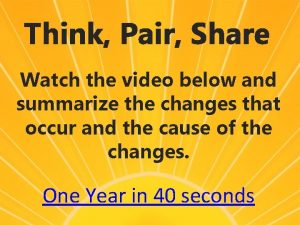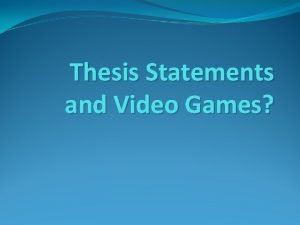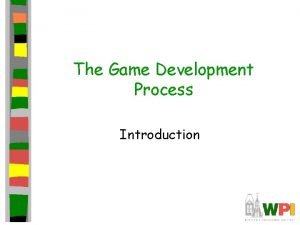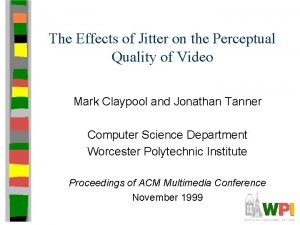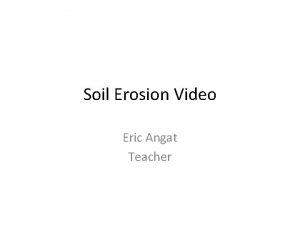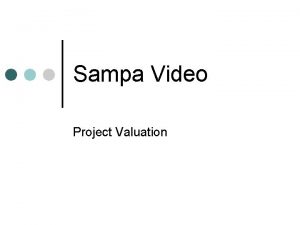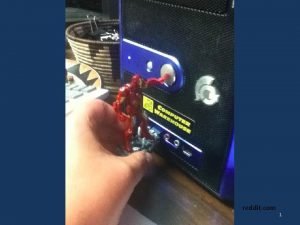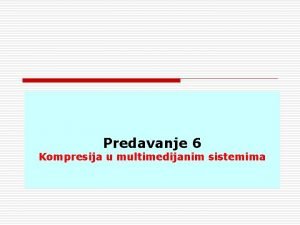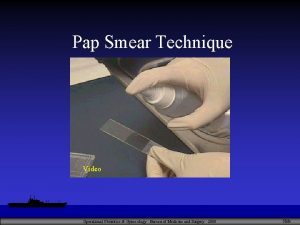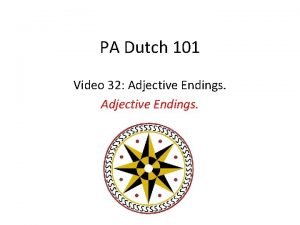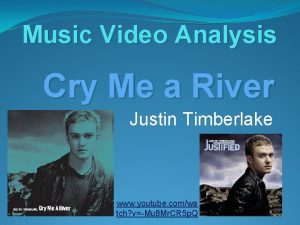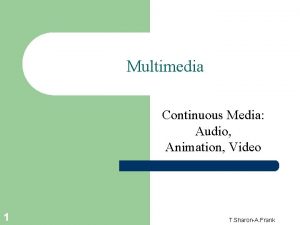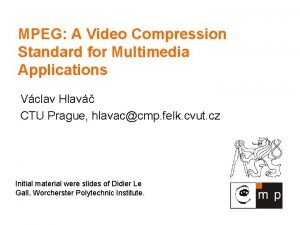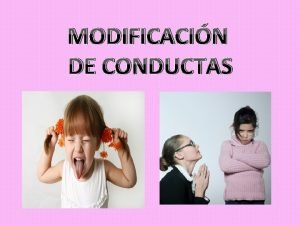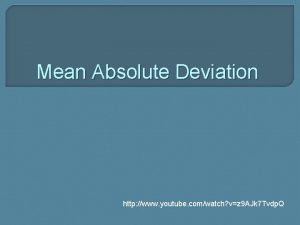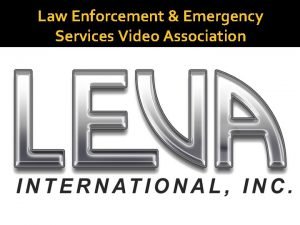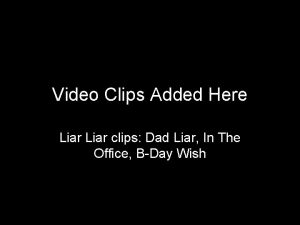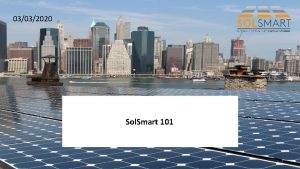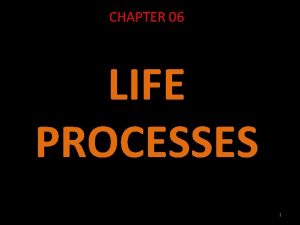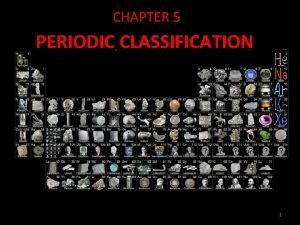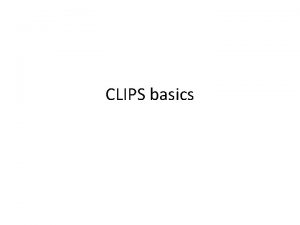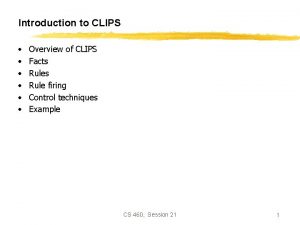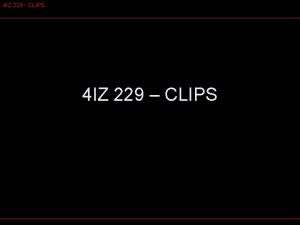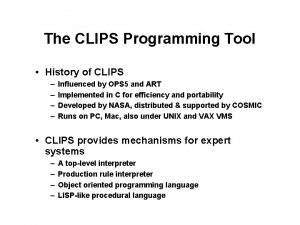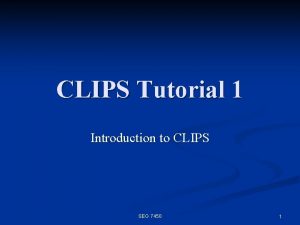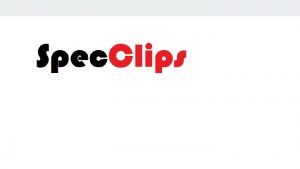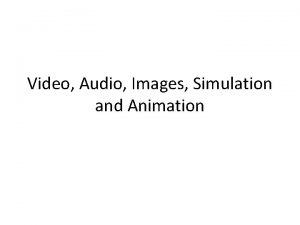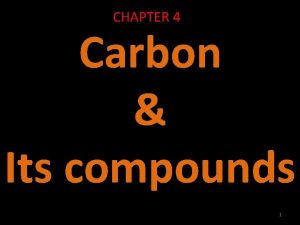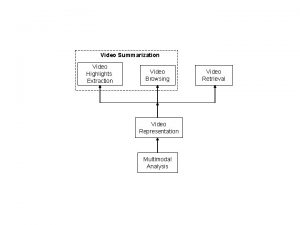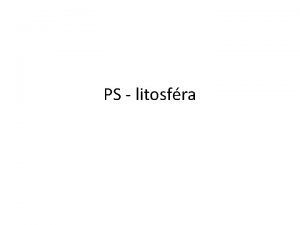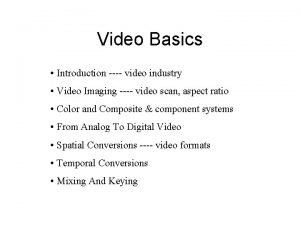CHAPTER 10 1 Acknowledgment Images video clips have
























































































































- Slides: 120

CHAPTER 10 1

Acknowledgment • Images & video clips have been taken from various sources on the internet. • Some images and video clips have been modified according to the syllabus. Images courtesy: google. com Video clips courtesy: youtube. com Use this presentation for Education purpose only. 2

Contents Reflection of light Lens Spherical Mirrors Power of lens Convex mirror Exercise (MCQ) Refraction of light Laws of refraction of light 3

Reflection of light 4

Reflection of light The process through which light rays falling on the surface on an object are sent back is called reflection of light. 5

Incident ray An incident ray is a ray of light that strikes a reflecting surface. 6

Reflected ray The ray that represents the light reflected by the reflecting surface. 7

Normal ray A ray that is incident at 90 degrees to a surface. 8

Angle of incidence The angle which an incident ray makes with normal at point of incidence. 9

Angle of Reflection The angle which a reflected ray makes with normal at point of incidence. 10

Laws of reflection of light The angle of incidence is equal to the angle of reflection. 11

Laws of reflection of light The incident ray, the normal to the mirror at the point of incidence and the reflected ray, all lie on the same plane. 12

Characteristics of image formed by a plane mirror a) The image formed by the plane mirror is always virtual and erect. 13

Characteristics of image formed by a plane mirror b) The size of the image is equal to that of the object. 14

Characteristics of image formed by a plane mirror c) The image formed is as far behind the mirror as the object is in front of it. 15

Characteristics of image formed by a plane mirror d) The image is laterally inverted. 16

Real image Vs Virtual image Real Image 1. The rays actually meet at the image point. 2. It can be taken on a screen. 3. It is always inverted. Virtual image 1. The rays appear to diverge from the image point. 2. It cannot be taken on the screen. 3. It is always erect. 17

Lateral inversion The inversion of the left hand side of the object into the right hand side in the image and vice-versa is called lateral inversion. 18

(Activity 10. 1) Take a large shining spoon. Try to view your face in its curved surface. Do you get the image? Is it smaller or larger? Yes, the image of the face formed on outer curved surface is smaller in size. 19

(Activity 10. 1) Take a large shining spoon. Try to view your face in its curved surface. Do you get the image? Is it smaller or larger? Move the spoon slowly away from your face. Observe the image. The size of image gradually decreases with an increase in field of view. 20

How does it change? Reverse the spoon and repeat the Activity. Earlier, when the spoon was close the image formed on the inner curved surface was erect and magnified and as we moved the spoon slowly away from our face, the image transitioned to an inverted image with gradual decrease in its size. 21

Compare the characteristics of the image on the two surfaces. Outer surface Inner surface (i) Image is always erect. (i) The image is erect when spoon is close and inverted when spoon is away (ii) Image size is gradually decreases as we move away the spoon (ii) Image size is larger when spoon is close and it is smaller when spoon is moved away 22

Spherical mirrors 23

Spherical mirror A Mirror in which reflecting surfaces are spherical are called spherical mirror. 24

Concave mirror A spherical mirror, whose reflecting surface is curved inwards (faces towards the centre of the sphere) is called a concave mirror. 25

Convex mirror A spherical mirror whose reflecting surface is curved outwards, is called a convex mirror. 26

Pole of the mirror The centre of the reflecting surface of a spherical mirror is a point called the pole. Pole 27

Centre of curvature The centre of the sphere of which the reflecting surface of a spherical mirror forms a part of a sphere. Centre of curvature 28

Radius of curvature The radius of the sphere of which the reflecting surface of a spherical mirror forms a part, is called the radius of curvature of the mirror. Radius Of curvature 29

Principal axis The straight line passing through the centre of curvature and pole of the spherical mirror, produced on both sides. 30

Focus of concave mirror The point on principal axis where all the parallel light rays after reflection actually meet at a point called focus (F). 31

Focus of convex mirror The point on principal axis where all the parallel light rays after reflection appear to meet at a point called focus (F). 32

Focal length The distance between the pole of the mirror and principal focus. The radius of curvature of a spherical mirror is twice the focal length. R=2 f 33

(Activity 10. 2) Hold a concave mirror in your hand direct it’s reflecting surface towards the Sun. Direct the light reflected by the mirror on to a sheet of paper held close to the mirror. Move the sheet of paper back and forth gradually until you find on the paper sheet a bright, sharp spot of light. Hold the mirror and the paper in the same position for a few minutes. What do you observe? Why? The light rays from the Sun, are concentrated at focus, and form a sharp spot of light on the sheet. Paper starts burning after some time due to increase intensity of reflected sun light from the mirror 34

(Activity 10. 2) Hold a concave mirror in your hand direct it’s reflecting surface towards the Sun. Direct the light reflected by the mirror on to a sheet of paper held close to the mirror. Move the sheet of paper back and forth gradually until you find on the paper sheet a bright, sharp spot of light. Why, we should not look at the Sun directly or even into a mirror reflecting sunlight? Because the intense heat resulting from the concentrated sun light through eye lens may burn the retina wall with dark spots. This may result in partial or complete vision impairment. 35

Image formation in a concave mirror & nature of the image when the object is placed: At infinity Nature: Real, inverted, highly diminished, point-sized image is formed at focus (F) 36

Image formation in a concave mirror & nature of the image when the object is placed: Beyond C Nature: Real, inverted, diminished, image is formed between C and F 37

Image formation in a concave mirror & nature of the image when the object is placed: At C Nature: Real, inverted, same size image is formed at C 38

Image formation in a concave mirror & nature of the image when the object is placed: Between C and F Nature: Real, inverted, enlarged image is formed beyond C 39

Image formation in a concave mirror & nature of the image when the object is placed: At F Nature: Real, inverted, highly enlarged image at infinity 40

Image formation in a concave mirror & nature of the image when the object is placed: Between F and P Nature: Virtual, erect, enlarged image is formed behind the mirror 41

Uses of concave mirror a) Concave mirror is used in torches, search lights and vehicle headlights to get powerful parallel beam of light. 42

Uses of concave mirror b) They are used in shaving mirrors to see a larger image of the face. 43

Uses of concave mirror c) Dentists use concave mirrors to see large images of the teeth of patients. 44

Uses of concave mirror d) Large concave mirrors are used to concentrate sunlight to produce heat in solar furnace. 45

Convex mirror 46

(Activity 10. 5) Take a convex mirror. Hold it in one hand. Hold a pencil in the upright position in the other hand. Observe the image of the pencil in the mirror. Is the image erect or inverted? Is it diminished or enlarged? The image is erect and diminished 47

(Activity 10. 5) Take a convex mirror. Hold it in one hand. Hold a pencil in the upright position in the other hand. Observe the image of the pencil in the mirror. Move the pencil away from the mirror slowly. Does the image become smaller or larger? The image becomes smaller. State whether the image will move closer to or farther away from the focus as the object is moved away from the mirror? The image will move closer to the focus. 48

Image formation in a convex mirror & nature of the image when the object is placed: At infinity Nature: Virtual, erect, highly diminished point sized image is formed at focus F behind the mirror. 49

Image formation in a convex mirror & nature of the image when the object is placed: Between infinity and the pole P the mirror Nature: Virtual, erect, diminished image is formed between F and P behind the mirror. 50

(Activity 10. 6) Observe the image of a distant object, say a distant tree, in a plane mirror. Could you see a full-length image? No, we cannot see a full-length image of a distant object in a plain mirror. Try with plane mirrors of different sizes. Did you see the entire object in the image? No, we cannot see a full-length image of the distant object in a plain mirror. 51

(Activity 10. 6) Observe the image of a distant object, say a distant tree, in a plane mirror. Repeat this Activity with a concave mirror. Did the mirror show full length image of the object? No, we cannot see a full length image in concave mirror. Now try using a convex mirror. Did you succeed? Explain your observations with reason. Yes, now we could see full length image of distant object with wider field of view. The image formed was diminished, erect and virtual. 52

Uses of convex mirror Convex mirror is used as rear-view mirror in vehicles. 53

Uses of convex mirror Convex mirror is used as rear-view mirror in vehicles. 54

Why do we prefer a convex mirror as a rear-view mirror in vehicles? Convex mirrors are commonly used as rearview (wing) mirrors in vehicles because they give an erect, virtual, full size diminished image of distant objects with a wider field of view. Convex mirrors enable the driver to view much larger area than would be possible with a plane mirror. 55

Sign Convention for Reflection by Spherical Mirror Or New Cartesian Sign Convention a) The object is placed to the left of the mirror. 56

Sign Convention for Reflection by Spherical Mirror Or New Cartesian Sign Convention b) All distances parallel to the principal axis are measured from the pole of the mirror. 57

Sign Convention for Reflection by Spherical Mirror Or New Cartesian Sign Convention c) All distances measured in the direction of incident ray (along + X-axis) are taken as positive and those measured against the direction of incident ray (along – X-axis) are taken as negative. 58

Sign Convention for Reflection by Spherical Mirror Or New Cartesian Sign Convention d) Distance measured perpendicular to and above the principal axis are taken as positive. 59

Sign Convention for Reflection by Spherical Mirror Or New Cartesian Sign Convention e) Distances measured perpendicular to and below the principal axis are taken as negative. 60

Object distance The distance of the object from its pole is called object distance (u). 61

Image distance The distance of the object from its pole is called object distance (u). 62

Mirror formula 63

Magnification is the ratio of the height of the image to the height of the object. 64

65

What happens when light enters from one transparent medium to another? When light travels from one transparent medium to another medium, it tends to change its directions. 66

Why does the bottom of a tank or a pond containing water appears to be raised? This is due to the refraction. The light rays pass through the air-water interface, they get bent due to refraction. The light rays are bent away from the normal making us perceive the bottom of the pond or tank as shallow or raised. 67

Why does a thick glass slab placed over some printed matter, the letters appear raised when viewed through the glass slab? The letters appear raised because of a phenomenon known as refraction. When light travels from one medium to another, it bends (either towards or away from the normal). This happens because different media have different densities and thus, the speed of light is different in each one of them. This causes the light to slow down or speed up, depending on the medium. 68

Why does a lemon kept in water in a glass tumbler appears to be bigger than its actual size, when viewed from the sides. Light is refracted as it passes from water into air. Tumbler with water acts as convex lens which curves outward in the middle and can focus light rays to magnify object. 69

A pencil partly immersed in water in a glass tumbler appears to be displaced at the interface of air and water. The light reaching the eye from the portion of the pencil inside water seems to come from a different direction, compared to the part above water. This makes the pencil appear to be displaced at the interface. 70

Refraction of light The change in direction of light when it passes from one medium to another obliquely is called refraction of light. 71

(Activity 10. 7) Place a coin at the bottom of a bucket filled with water. With your eye to a side above water, try to pick up the coin in one go. Did you succeed in picking up the coin? No Repeat the Activity. Why did you not succeed in doing it in one go? Because on seeing, the coin appeared to be closer than its actual distance, so we are likely to miss the coin. Reflected light coming from the submerged coin in denser medium of water, on entering air which is a rarer medium, bend away from the normal due to refraction of light and image size becomes larger than its actual size, thus submerged object apparently seem closer. 72

(Activity 10. 8) Place a large shallow bowl on a Table and put a coin in it. Move away slowly from the bowl. Stop when the coin just disappears from your sight. Ask a friend to pour water gently into the bowl without disturbing the coin. Keep looking for the coin from your position. Does the coin becomes visible again from your position? How could this happen? Yes, on pouring water into the bowl, the coin becomes visible again because due to refraction of light, for our eyes, the submerged coin apparently seems raised above its actual level and thus becomes visible on seeing from the same side and distance. 73

(Activity 10. 9) Draw a thick straight line in ink, over a sheet of white paper placed on a Table. Place a glass slab over the line in such a way that one of its edges makes an angle with the line. Look at the portion of the line under the slab from the sides. What do you observe? Does the line under the glass slab appear to be bent at the edges? Yes, due to the refraction of light, the line under the glass slab appear to be bent at the edges 74

(Activity 10. 9) Draw a thick straight line in ink, over a sheet of white paper placed on a Table. Place a glass slab over the line in such a way that one of its edges makes an angle with the line. Next, place the glass slab such that it is normal to the line. What do you observe now? Does the part of the line under the glass slab appear bent? No, now the part of the line under the glass slab appear in a straight line. Because a ray of light, which is perpendicular to the plain of a refracting medium, does not change its angle due to refraction. 75

(Activity 10. 9) Draw a thick straight line in ink, over a sheet of white paper placed on a Table. Place a glass slab over the line in such a way that one of its edges makes an angle with the line. Look at the line from the top of the glass slab. Does the part of the line, beneath the slab, appear to be raised? Why does this happen? Yes, the part of the line, beneath the slab, appear to be raised. Due to refraction of light, apparent position of image of object seems nearer than its actual position. 76

Fix a sheet of white paper on a drawing board using drawing pins. Place a rectangular glass slab over the sheet in the middle. Draw the outline of the slab with a pencil. Let us name the outline as ABCD. Take four identical pins. Fix two pins, say E and F, vertically such that the line joining the pins is inclined to the edge AB. Look for the images of the pins E and F through the opposite edge. Fix two other pins, say G and H, such that these pins and the images of E and F lie on a straight line. Remove the pins and the slab. Join the positions of tip of the pins E and F and produce the line up to AB. Let EF meet AB at O. Similarly, join the positions of tip of the pins G and H and produce it up to the edge CD. Let HG meet CD at O′. Join O and O′. Also produce EF up to P 77

Fix a sheet of white paper on a drawing board using drawing pins. Place a rectangular glass slab over the sheet in the middle. Draw the outline of the slab with a pencil. Let us name the outline as ABCD. Take four identical pins. Question 1. What happens to incident ray as it enters the glass slab? The incident ray as it enters from a rarer medium of air to a denser medium of glass, bends towards the normal, due to refraction of light. The refraction is caused by change in the speed of light as it enters from one transparent medium to another. 78

Fix a sheet of white paper on a drawing board using drawing pins. Place a rectangular glass slab over the sheet in the middle. Draw the outline of the slab with a pencil. Let us name the outline as ABCD. Take four identical pins. Question 2. What happens to emergent ray as it leaves the glass slab? The emergent ray as it leaves the denser medium of glass and enters into a rarer medium of air, bends away from the normal, due to refraction of light. The refraction is caused by change in the speed of light as it enters from one transparent medium to another. 79

Fix a sheet of white paper on a drawing board using drawing pins. Place a rectangular glass slab over the sheet in the middle. Draw the outline of the slab with a pencil. Let us name the outline as ABCD. Take four identical pins. Question 3. What is the perpendicular distance between directions of incident and emergent rays? Lateral displacement. This gives a measure of path deviation of refracted rays due to refraction. 80

Fix a sheet of white paper on a drawing board using drawing pins. Place a rectangular glass slab over the sheet in the middle. Draw the outline of the slab with a pencil. Let us name the outline as ABCD. Take four identical pins. Question 4. As given in the activity above, the medium of incidence and emergent ray is same (air), what could be the possible observations for angle of incidence and angle of emergence? When the medium of incidence and emergent ray is same (air), angle of incidence is equal to angle of emergence. 81

Laws of Refraction of light (i) The incident ray, the refracted ray and the normal to the interface of two transparent media at the point of incidence, all lie in the same plane. 82

Laws of Refraction of light (ii) The ratio of sine of angle of incidence to the sine of angle of refraction is a constant, for the light of a given colour and for the given pair of media. 83

Refractive index The refractive index of a medium is defined as the ratio of speed of light in vacuum to the speed of light in the medium. It is represented by n. Absolute Refractive index of a medium with respect to vacuum or air. Refractive index of water is 1. 33 – Write the meaning of the statement. This means that the ratio of the speed of light in air and the speed of light in water is equal to 1. 33. 84

When is a medium said to be optically denser? The medium with the larger refractive index is optically denser medium. When is a medium said to be optically rarer? The medium with the lower refractive index is optically rarer medium. 85

Lateral shift The perpendicular distance between the direction of the incident ray and emergent ray is called lateral shift. 86

Lens 87

Lens A lens is a transparent material bound by two surfaces, of which one or both surfaces are spherical. 88

Convex Lens A lens having two spherical surfaces, bulging outwards is called a double convex lens or a convex lens. It is thicker at the middle and thinner at the edges. It is also called as converging lens. 89

Concave Lens A lens which is bounded by two spherical surfaces, curved inwards is called concave lens. It is thicker in the edges and thinner in the middle. It is also called diverging lens. 90

Optic centre of the lens The centre point of a lens is called the optic centre. Optic centre 91

Centre of curvature The centre of the spheres of which the lens forms a part. 92

Radius of curvature The radius of the sphere of which lens forms a part is called the radius of curvature of the lens. Radius of curvature 93

Principal axis The imaginary straight line passing through the two centres of curvature is called principal axis. Principal axis 94

Principal focus of convex lens The point on principal axis where all the parallel light rays after refraction actually meet at a point called focus (F). 95

Principal focus of concave lens The point on principal axis where all the parallel light rays after refraction appear to meet at a point called focus(F). 96

Focal length The distance of the principal focus from the optical centre of the lens is called focal length (f). 97

Aperture The diameter of the circular outline of a lens is called aperture. 98

(Activity 10. 11) Hold a convex lens in your hand. Direct it towards the Sun. Focus the light from the Sun on a sheet of paper. Obtain a sharp bright image of the Sun. Hold the paper and the lens in the same position for a while. Keep observing the paper. What happened? Why? The paper begins to burn producing smoke. If we still hold the paper and the lens in the same position for some more time, the paper may even catch fire. The parallel rays of light from the sun are converged by the lens at the sharp bright spot formed on the paper. The concentration of the sunlight at a point generated heat. The bright spot is the real image of the sun. 99

Image formation in a convex lens & nature of the image when the object is placed: At infinity Nature: Real, inverted, highly diminished image is formed at F 2. 100

Image formation in a convex lens & nature of the image when the object is placed: Beyond 2 F 1 Nature: Real, inverted, diminished image is formed between F 2 and 2 F 2. 101

Image formation in a convex lens & nature of the image when the object is placed: At 2 F 1 Nature: Real, inverted, same size image is formed at 2 F 2. 102

Image formation in a convex lens & nature of the image when the object is placed: Between 2 F 1 and F 1 Nature: Real, inverted, enlarged image is formed at beyond 2 F 2. 103

Image formation in a convex lens & nature of the image when the object is placed: At F 1 Nature: Real, inverted, enlarged image is formed at infinity. 104

Image formation in a convex lens & nature of the image when the object is placed: Between F 1 and O Nature: Virtual, erect, enlarged image is formed behind the lens. 105

Image formation in a concave lens & nature of the image when the object is placed: At infinity Nature: Virtual, erect, diminished image is formed at F 1. 106

Image formation in a concave lens & nature of the image when the object is placed: Between F and O Nature: Virtual, erect, diminished image is formed between F 1 and O. 107

Convex lens Vs Concave lens Convex Lens 1. It is thicker at the centre than at the edges. 2. It converges parallel beam of light on refraction through it. 3. It has a real focus. Concave lens 1. It is thinner at the centre than at the edges. 2. It diverges a parallel beam of light on refraction through it. 3. It has a virtual focus. 108

Lens formula 109

Magnification of lens Magnification is the ratio of the height of the image to the height of the object. 110

Power of lens Power of a lens is defined as the reciprocal of its focal length. 111

Power of lens SI unit of power of lens is Dioptre (D) One dioptre is the power of a lens whose focal length is 1 metre. 1 D=1 m -1 112

Why do we use lens combinations in various optical instruments? i) To increase the magnification of the image. ii) To increase the sharpness of the image iii) To erect the final image iv) To minimise certain defects or aberrations in the image formed by a single lens. 113

Exercise (MCQ) 114

1. Which one of the following materials cannot be used to make a lens? (a) Water (b) Glass (c) Plastic (d) Clay 115

2. The image formed by a concave mirror is observed to be virtual, erect and larger than the object. Where should be the position of the object? (a) Between the principal focus and the centre of curvature (b) At the centre of curvature (c) Beyond the centre of curvature (d) Between the pole of the mirror and its principal focus. 116

3. Where should an object be placed in front of a convex lens to get a real image of the size of the object? (a) At the principal focus of the lens (b) At twice the focal length (c) At infinity (d) Between the optical centre of the lens and its principal focus. 117

4. A spherical mirror and a thin spherical lens have each a focal length of – 15 cm. The mirror and the lens are likely to be (a) both concave. (b) both convex. (c) the mirror is concave and the lens is convex. (d) the mirror is convex, but the lens is concave. 118

5. to No matter how far you stand from a mirror, your image appears erect. The mirror is likely be (a) plane. (b) concave. (c) convex. (d) either plane or convex. 119

END Prepared by Girish. N, Bengaluru 9844217032 120
 Acknowledgment images
Acknowledgment images We can have only video clips in the collection pane
We can have only video clips in the collection pane Situational leadership paul hersey
Situational leadership paul hersey Construction safety association of ontario
Construction safety association of ontario Que es un video clips
Que es un video clips Video clips
Video clips Assertiveness discussion questions
Assertiveness discussion questions Acknowledgment slide
Acknowledgment slide Acknowledgment
Acknowledgment Acknowledgment
Acknowledgment What 3d shape has 6 faces 8 vertices and 12 edges
What 3d shape has 6 faces 8 vertices and 12 edges Shrek satire
Shrek satire Function of course adjustment knob
Function of course adjustment knob Clips rules
Clips rules Shrek satire worksheet
Shrek satire worksheet 40x
40x Clips expert system
Clips expert system Clips decision tree example
Clips decision tree example Sports clips camby
Sports clips camby Atypicalfilms
Atypicalfilms Klips 2 0
Klips 2 0 A bar magnet that holds a chain of paper clips illustrates
A bar magnet that holds a chain of paper clips illustrates Jess java
Jess java March identifier clips
March identifier clips Comment remonter un stylo à ressort
Comment remonter un stylo à ressort Clips bilder
Clips bilder Tips for clips
Tips for clips Being well groomed begins with
Being well groomed begins with Danielle cobe
Danielle cobe Deffacts clips
Deffacts clips Salience clips
Salience clips Yandex ru video search text video
Yandex ru video search text video Video.search.yahoo.com search video
Video.search.yahoo.com search video Videos yahoo search
Videos yahoo search Digital media primer
Digital media primer Real vs virtual image
Real vs virtual image Hi
Hi Https://tw.images.search.yahoo.com/images/view
Https://tw.images.search.yahoo.com/images/view How to save images on google images
How to save images on google images Https://tw.images.search.yahoo.com/images/view
Https://tw.images.search.yahoo.com/images/view Cholesterol glycerol
Cholesterol glycerol What do these images have in common
What do these images have in common What do these three pictures have in common
What do these three pictures have in common Words have meaning and names have power
Words have meaning and names have power Does congress have the power to have no mail on saturdays
Does congress have the power to have no mail on saturdays Suggestions modals
Suggestions modals You are not rejected
You are not rejected I have decided i have resolved
I have decided i have resolved Ideas have consequences bad ideas have victims
Ideas have consequences bad ideas have victims Past simple
Past simple The zoo dangerous curves
The zoo dangerous curves The past of will
The past of will Echinoderms have spiny skin
Echinoderms have spiny skin Image restoration theory
Image restoration theory Do you have carrots chapter 2
Do you have carrots chapter 2 William shakespeare biography video
William shakespeare biography video Video on rotation and revolution
Video on rotation and revolution Exfoliation definition weathering
Exfoliation definition weathering Video adalah
Video adalah Pengertian kamera video
Pengertian kamera video Video standard ntsc
Video standard ntsc Radiohead video where everyone lies down
Radiohead video where everyone lies down Video de apresentação pitch
Video de apresentação pitch Febrina tri wulandari
Febrina tri wulandari Video ipath
Video ipath Pengertian video dokumenter
Pengertian video dokumenter Shadow mask method
Shadow mask method What is digital video in multimedia
What is digital video in multimedia Hevc full form
Hevc full form Belligerent
Belligerent Ut video codec suite
Ut video codec suite Use case diagram for video rental system
Use case diagram for video rental system Weathering and erosion difference youtube video
Weathering and erosion difference youtube video How analog video works
How analog video works How analog video works
How analog video works Think pair share video
Think pair share video Thesis statement of video games
Thesis statement of video games Star death video
Star death video Louise norton
Louise norton Game development timeline
Game development timeline Jitter video effects
Jitter video effects Media toolbar download
Media toolbar download Mathisfun tetris
Mathisfun tetris Biomes
Biomes Video conferencing vs telepresence
Video conferencing vs telepresence Video xxx de juan herrera y mav
Video xxx de juan herrera y mav Rahaf mohammed video
Rahaf mohammed video Open architecture
Open architecture Soil erosion video
Soil erosion video Jo14 gameplay twitter
Jo14 gameplay twitter Justice video network
Justice video network Materi audio video
Materi audio video Figurative language video brainpop
Figurative language video brainpop Shifting more attention to video salient object detection
Shifting more attention to video salient object detection Australia video
Australia video Sampa capital
Sampa capital Nevion video ipath
Nevion video ipath Revelation song phillips craig and dean
Revelation song phillips craig and dean Rapid prototyping video
Rapid prototyping video Kompresija video zapisa
Kompresija video zapisa Online video distributors
Online video distributors Polycom vc equipment
Polycom vc equipment Pap smear video
Pap smear video Practice german adjective endings
Practice german adjective endings Watch?v=4znvmgdwwgy
Watch?v=4znvmgdwwgy Music video structure
Music video structure Music video codes
Music video codes Who sang cry me a river first
Who sang cry me a river first Image is a continuous media
Image is a continuous media Spatial redundancy in video compression
Spatial redundancy in video compression Sebuah roket bermassa 200 ton diarahkan tegak lurus ke atas
Sebuah roket bermassa 200 ton diarahkan tegak lurus ke atas Observemos el siguiente video
Observemos el siguiente video Secure base
Secure base Audio web conferencing
Audio web conferencing Iambic pentameter calculator
Iambic pentameter calculator Mass wasting video
Mass wasting video Elements of a short story video
Elements of a short story video Ligature cutter training video
Ligature cutter training video Law enforcement and emergency services video association
Law enforcement and emergency services video association Plc video critique
Plc video critique Topi saya bundar ciptaan
Topi saya bundar ciptaan
